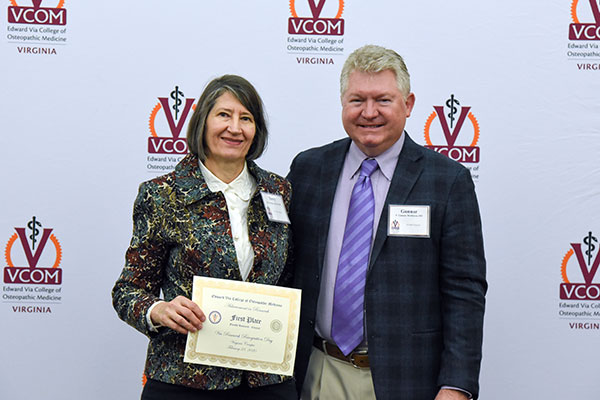
Research into the effects of disinfectants conducted by Terry Hrubec, DVM, PhD, Professor for Anatomical Sciences for VCOM-Virginia, was featured as the cover story for the publication, Chemical & Engineering News. Dr. Hrubec discovered in her lab back in 2009 that a particular type of disinfectant was altering her mice for her research. She tracked down the problem, the animal care facility had switched the type of disinfectant, and the new one contained alkyldimethylbenzylammonium chloride (ADBAC) and didecyldimethylammonium chloride (DDAC). These compounds belong to a family of molecules called quaternary ammoniums, or quats.
Through her research, Dr. Hrubec discovered that ADBAC and DDAC cause developmental, fertility, and immune system problems in mice. If the compounds can cause that in mice, what about humans, she thought. Especially with COVID-19 roaring through the world and more businesses, schools and facilities using disinfectants with such compounds to rid surfaces of the virus.
I am excited to make my research visible to a broader audience. This is particularly true with the increased use of disinfectants amid the COVID-19 outbreak. My research has found that an ingredient in many common brand name household cleaners and disinfectants such as Lysol, Clorox, Simple Green, and many more, causes birth defects and infertility in mice. In a human study, I found that 80% of people in the study had disinfectant residues in their blood
On March 4, after hearing Dr. Hrubec present her research and other scientist presentations and counterarguments, a panel of nine scientists voted unanimously to place quats in the Biomonitoring California program. The state of California established this program in 2006 to reduce Californians’ exposure to harmful chemicals.
Together, Hrubec and two other researchers have also begun a small biomonitoring pilot study to assess levels of quats in people and look for any associated impacts.
“We don’t know if this exposure causes any health effects, but we found increased inflammation and decreased mitochondrial function in people who had disinfectant in their blood. We need to study this further to see if these changes contribute to disease. These findings are of particular concern to the medical community as the disinfectant is used extensively in healthcare settings,” said Dr. Hrubec.
When asked about having her research featured as the cover story, Hrubec said, “having greater visibility for my work is rewarding because it helps spread this message to the public, and hopefully will help shape guidelines for safe and effective use of disinfectants. I want to thank VCOM for the support of my work, and thank the many VCOM students who have participated in this research. Without their help and support, this would not have been possible.”
